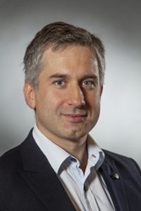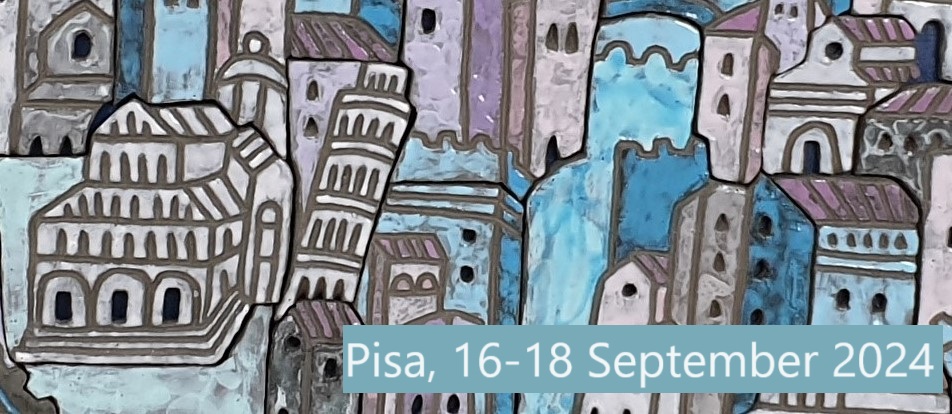International Workshop on Reaction Systems
4th Edition - Pisa, 18 September 2024
Introduction
Since their introduction about 15 years ago, reaction systems matured into a fruitful and dynamically evolving research area, which attracted a noticeable group of researchers. The original motivation was to understand interactions of biochemical reactions in the living cell and since then reaction systems have also become a popular novel model of interactive computation.
Previous editions
- Milan, Italy, June 2018
- Torun, Poland, June 2019
- Jacksonville, Florida, USA, March 2023
Organizers
- Linda Brodo (co-chair)
- Roberto Bruni
- Moreno Falaschi (co-chair)
- Roberta Gori
- Paolo Milazzo
Keynote tutorial and talk

Ion Petre, University of Turku, FI
Title: Tutorial on Reaction Systems. A set-theoretical modeling framework based on facilitation, inhibition, and interaction with the environment.
Abstract: Reaction systems (RS) is a model of computation inspired by the functioning of the living cell. Its main focus is on reactions and facilitation/inhibition dynamical inter-play between reactions. A reaction is described through its reactants, its inhibitors, and its products. The products of a reaction may introduce inhibitors to another reaction, temporarily blocking its triggering. This leads to a novel way of describing dynamical systems, that allows an explicit trace of WHY a certain property emerges in the system. It is a flexible model of computation that allows both a qualitative, as well as a quantitative view on a system, a set theoretical framework for computation, and the flexibility to model intricate biological behavior.
This tutorial offers a basic introduction to reaction systems, with no prerequisites needed except computational maturity. It introduces the basic notions of reaction systems and reviews a number of research directions motivated by biological considerations. We discuss some of the unique features of reaction systems: its explicit description of inhibition, its approach to competing on resources, its non-permanency philosophy, and the continuous interplay with the environment. We demonstrate the descriptive power of reaction systems through a number of examples, culminating in an RS-based model of the receptor tyrosine kinase signaling network in breast cancer.

Maciej Koutny, University of Newcastle, UK.
Title: Mining Reactions in Reaction Systems with Discrete Concentrations.
Abstract: A fundamental feature of Reaction Systems is that all possible interactions of biochemical reactions are based on the mechanisms of facilitation and inhibition, i.e., the products (entities) of reactions may facilitate or inhibit each other.
Another key feature of the Reaction System model of is that it represents the reactions, states, and dynamic processes using (tuples of) finite sets of entities (or molecules), and so it directly captures the qualitative aspects of systems, rather than their quantitative aspects.
A situation often encountered in practical applications is that a reaction system with discrete concentrations is only partially specified, e.g., it is not known what the actual concentration of a reactant or inhibitor should be. In such cases, the possibility of an effective automated derivation of the missing details would provide an attractive design approach. To show how such an idea might work, this talk will discuss parametric reaction systems with parameters representing under-specified components of hypothetical reactions. The key development to be covered by the talk is a method for replacing the parameters in such a way that the resulting Reaction System operating in a specified external environment satisfies a given temporal logic formula.
Workshop program
For session scheduling and timing, see the
integrated CMSB 2024 and Workshop RS program
This is the list of confirmed talks:
Reaction Systems with Self Distinction: Simulations, Transformations, and Applications
by Paolo Bottoni (University La Sapienza, Roma), Tiziana Castrignanò (University of Tuscia, Viterbo), Anna Labella (University La Sapienza, Roma)
Fuzzy Reaction Systems
by Luca Manzoni (University of Trieste)
A topology for P systems with active membranes
by Enrico Formenti (Université Côte d’Azur, Nice)
On categorical approach to reaction systems
by Mariusz Kaniecki (University of Torun)
Modelling with Distributed Reaction Systems
by Łukasz Mikulski (University of Torun)
Languages of networks of Reaction Systems
by Erzsébet Csuhaj Varju (Eötvös Loránd University, Budapest)
Reaction Systems Structures and Transformations
by Daniela Genova (University of North Florida)
Attractor and Slicing Analysis of Gene Regulatory Networks with Positive Reaction Systems
by Linda Brodo (University of Sassari), Roberto Bruni (University of Pisa), Moreno Falaschi (University of Siena), Roberta Gori (University of Pisa), and Paolo Milazzo (University of Pisa)
Experimenting with Reaction Systems using Graph Tansformation
by Roberto Bruni (University of Pisa), Arend Rensink (University. of Twente)
